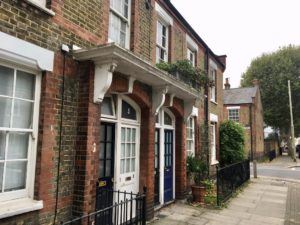The judges made the right decision in last night’s RIBA Stirling Prize, awarding it to the Goldsmith Street council estate in Norwich. It was the first ever council housing scheme to win the prize.
The residents said, “We want streets back in Norwich” and that’s precisely what they’ve got – the type of traditional low-rise, high-density streets with clear fronts and clear backs in which it is easy to walk about, to play and to know your neighbours. It’s beautiful and it’s built to exemplary energy standards. And on a budget.
It’s particularly heartening because more often than not Stirling Prize judges have been victim to a bad case of ‘design disconnect.’ This is the predictable phenomenon whereby many professional designers actively like what the general public actively dislike. Many recent winners, such as Zaha Hadid’s MAXXI in Rome, appear to have been consciously designed to be as unsettling and unpleasant as possible to people with a normal psychological response to their environments.
The type of popular, walkable ‘gentle density’ in this year’s winner should be the model for most of our new homes, council or market, small town or big city. However, too often insane rules on back-to-back distances or car parking make it impossible. Norwich City Council were right to rip them up. Other councils should too. They are hurting their own citizens.

Some of the very earliest councils houses followed excellent urban design principles – for example the 1906 Lathmere Estate (left) from 1906 which is a mix of beautiful terraced streets with private gardens and a lovely public square. Too much of what we have built in the interim or are still building today is atrociously designed to the harm of resident’s wellbeing.
Goldsmith Street is the future – not drive-to cul-de-sacs or over-designed blocks in space. Well done Mikhail Riches. And well done Norwich City Council.







Join the discussion
Join like minded readers that support our journalism by becoming a paid subscriber
To join the discussion in the comments, become a paid subscriber.
Join like minded readers that support our journalism, read unlimited articles and enjoy other subscriber-only benefits.
Subscribe